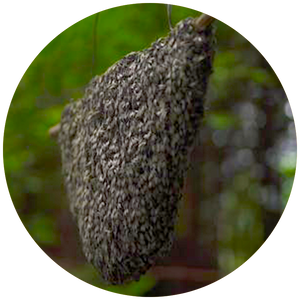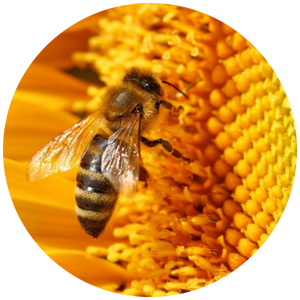Crystallization of honey - is a natural process of 100% pure honey.
Honey is a supersaturated solution made up of two natural sugars: glucose and fructose.
The proportions of these two sugars are characteristic of the plants the bees fed on to make their honey. It's the glucose that crystallizes, so some types of honeys are more resistant to crystallization because they have low glucose: https://www.wired.com/2014/03/crystalized-honey/
The truth is crystallization of honey is a natural and uncontrolled process. ... During crystallization, glucose sugar which is naturally pure white, separates from water and becomes crystals, while fructose remains as a liquid.
Please check the internet as well for research and discussions on the same: http://www.benefits-of-honey.com/crystallization-of-honey.html, http://scienceline.org/2007/04/ask-westly-crystallizedhoney/.
It's the over processed, commercial blended honeys that do NOT crystallize.
Crystallised honey has been tampered with (by adding sugar or jaggery)
Honey crystallises in cold weather due to its glucose content. Simply placing the jar in warm water brings it back to its liquid state. In fact, in certain parts of the world, crystallised honey is used like a jam.
Honey is naturally golden in colour
The colour of honey varies widely and depends on the flowers the bees feed on. Honey can be blonde, burgundy, dark brown and even golden.
Runny honey is diluted
The texture of honey depends on the moisture levels in the natural environment. In the Western Ghats where there is extensive rainfall, honey has a higher content of moisture.
Bitter/sour honey has gone bad
Bees collect nectar from different flowers. The floral source determines the flavour – sweet, bitter or sour. Far from going bad, bitter honey is prized for its nutritional value
Honey has a consistent taste
The taste of honey depends on the season of its collection, the type of bee that collects it, and the floral source. In fact, not only do varieties of honey taste different, different batches of the same variety also do.
A layer of residue on top of the honey shows honey has gone bad.
The residue formation on top of the honey is nothing but pollen, naturally found in the honey. When honey is left untouched for a long period of time, the pollen forms a thin film on top. Simply stirring the honey will make the pollen dissolve. In fact, more and more people today consider bee pollen to be a superfood. In many countries, bee pollen is consumed as a distinct item.
Can diabetics have honey?
This question is better addressed by a doctor. While honey is better than sugar, we are not medical practitioners and therefore cannot advise it as suitable for diabetics. Please consult your doctor for the above.



























